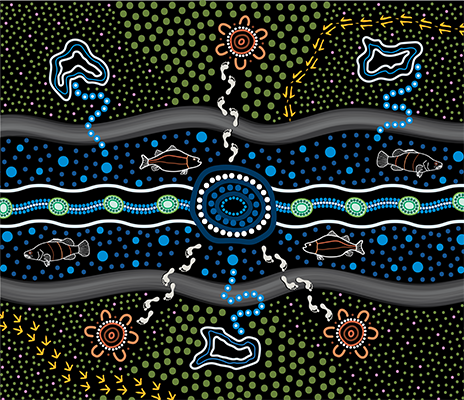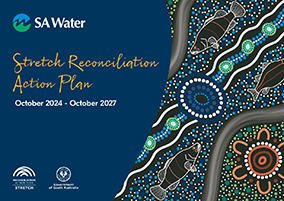Reconciliation
We recognise the history and value the knowledge, experience and contribution of the world’s oldest living continuous culture, and the unique relationships Aboriginal and Torres Strait Islander people have with the lands and waters where we work, live and learn.
Our vision for reconciliation is for healthy communities, sustained by integrating Aboriginal knowledge, culture and rights into our long-term planning and everyday work practices.
We are taking action to enable our Aboriginal customers and communities to prosper, and ensure a culturally safe and respectful workplace for our people.
Our 2024-27 Reconciliation Action Plan (RAP) outlines our commitments to reconciliation and how we will continue to embed practical actions throughout our organisation; provide our people with the ability to collaboratively achieve these actions; and leverage our position as a state-wide essential services provider to increase understanding and appreciation of Aboriginal and Torres Strait Islander culture, knowledge and skills in the South Australian community.
This is our third Stretch RAP and sixth overall, and was developed with input from Kauwi Miyurna (our Aboriginal and Torres Strait Islander network group), key people from across SA Water including those with direct relationships with our Aboriginal and Torres Strait Islander customers, stakeholders and communities, and several similar organisations at various stages in their RAP journey. Our RAP aligns with our corporate strategy and Reconciliation Australia’s framework of relationships, respect and opportunities. Some examples of our current reconciliation-focused initiatives include:
Kauwi Miyurna Branding
Our Kauwi Miyurna Branding is based on an original piece of art created by our talented Graphic Designer, Bree Ah Chee. Titled Country flows through water, it reflects the work we do and the state we serve, representing the places where we connect with colleagues and the community.
With contribution from our Aboriginal and Torres Strait Islander employee network group, Kauwi Miyurna, meaning ‘water people’ in Kaurna language, the artwork pays homage to different areas of South Australia and our operations, including the River Murray, remote communities, and our depots, offices and assets.
We use the Kauwi Miyurna Branding at our sites, on uniforms and in corporate documents and materials where it’s appropriate and important to demonstrate our connection to Country and culture.
Country flows through water
At the heart of the artwork, you will find SA Water represented by large navy circles, surrounded by the River Murray, a natural water source that we rely heavily upon.
Flowing from either side of the centre, are green circles symbolising the remote communities we provide services for. Within the water, Pondi (Murray Cod) swim freely, while winding streams branch off into reservoirs - another vital source sustaining our community.
The sweeping, cloud-like lines embody the riverbanks, capturing the transition from flowing water to solid land.
From the centre, human footprints reach outward to yarning circles (circles surrounded by ‘U’ shapes) which are places where we come to connect, share ideas and allow action and innovation to take shape.
These are representative of our depots, water and wastewater treatment plants and facilities.
Across the green land littered with native plants (pink dots), kangaroo and emu tracks remind us that, like these animals, we only move forwards, never backwards.



